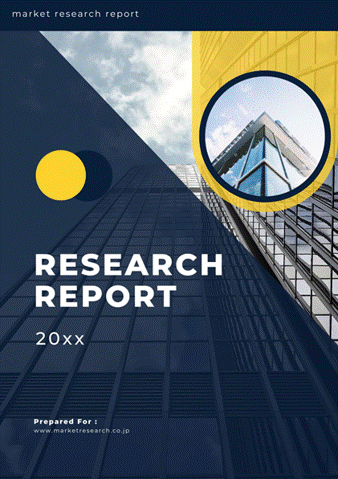 | • レポートコード:MRC2103C144 • 出版社/出版日:Mordor Intelligence / 2021年2月27日 • レポート形態:英文、PDF、111ページ • 納品方法:Eメール(受注後2-3営業日) • 産業分類:医療 |
| Single User | ¥629,000 (USD4,250) | ▷ お問い合わせ |
| Team User | ¥703,000 (USD4,750) | ▷ お問い合わせ |
| Corporate License | ¥1,110,000 (USD7,500) | ▷ お問い合わせ |
• お支払方法:銀行振込(納品後、ご請求書送付)
レポート概要
| 本調査資料では、世界のポータブル酸素濃縮器市場について調査し、イントロダクション、調査手法、エグゼクティブサマリー、市場動向、技術別(連続流、パルス流)分析、用途別(慢性閉塞性肺疾患(COPD)、喘息、急性呼吸窮迫症候群、その他)分析、エンドユーザー別(病院、在宅医療、その他)分析、地域別分析、競争状況、市場機会/将来の見通しなどを掲載しています。 ・イントロダクション ・調査手法 ・エグゼクティブサマリー ・市場動向 ・世界のポータブル酸素濃縮器市場規模:技術別(連続流、パルス流) ・世界のポータブル酸素濃縮器市場規模:用途別(慢性閉塞性肺疾患(COPD)、喘息、急性呼吸窮迫症候群、その他) ・世界のポータブル酸素濃縮器市場規模:エンドユーザー別(病院、在宅医療、その他) ・世界のポータブル酸素濃縮器市場規模:地域別 ・競争状況 ・市場機会/将来の見通し |
A portable oxygen concentrator (POC) is a device used to provide oxygen therapy to people that require greater oxygen concentrations than the levels of ambient air. As they are small enough to carry and many are now approved for use on airplanes as well. Therefore as a result demand for portable oxygen concentrators is found increasing.
There is also an increasing prevalence of respiratory diseases and growing geriatric population globally that has increased the overall demand for portable oxygen concentrators. Hence these factors have hence acted as driving factors for the growth of the market. However, the risk of respiratory diseases due to unclean and contaminated equipment and adverse effects such as skin irritation may help in hindering the growth of the market.
Key Market Trends
Application in Asthma is Expected to Cover a Large Market Share
Asthma is one of the major noncommunicable diseases. It is a chronic disease of the air passages of the lungs which inflames and narrows them. According to a World Health Organization 2017 report, there are approximately 235 million people suffering from asthma globally. As per this report, there were 383,000 deaths due to asthma in 2015. Moreover, the prevalence of asthma seems to be increasing. The portable oxygen concentrators can be easily carried and hence are found to be very useful for asthma patients. Hence, increasing the prevalence of asthma is expected to help the portable oxygen concentrators market grow.
North America is Expected to Dominate the Portable Oxygen Concentrators Market
The prevalence of respiratory disorders is high in North American countries. According to the Centers for Disease Control and Prevention (CDC) 2017, 1 in every 13 people have asthma in the United States and this prevalence translates to more than 25 million US population. In 2014, 8.1% of Canadians aged 12 and older, roughly 2.4 million people, has reported that they had been diagnosed with asthma, as per Statistics Canada (Ministery of Innovation, Science and Industry). This has thus created the high demand for portable oxygen concentrators for therapies like oxygen therapy.
However, the United States and Canada have a developed and well-structured health care system. These systems also encourage research and development. These policies encourage global players to enter the US and Canada. As a result, these countries enjoy the presence of many global market players. As high demand is met by the presence of global players in the region, the market is further expected to increase.
Competitive Landscape
Majority of the portable oxygen concentrators are being manufactured by the global key players. Market leaders with more funds for research and better distribution system have established their position in the market. Moreover, Asia-pacific is witnessing an emergence of some small players due to the rise of awareness. This has also helped the market grow.
Reasons to Purchase this report:
– The market estimate (ME) sheet in Excel format
– 3 months of analyst support
1 INTRODUCTION
1.1 Study Deliverables
1.2 Study Assumptions
1.3 Scope of the Study
2 RESEARCH METHODOLOGY
3 EXECUTIVE SUMMARY
4 MARKET DYNAMICS
4.1 Market Overview
4.2 Market Drivers
4.2.1 Increasing Prevalence of Respiratory Disorders
4.2.2 Rising Geriatric Population
4.3 Market Restraints
4.3.1 Risk of Diseases due to Contamination of the Equipment
4.3.2 Adverse Effects such as Skin Irritation
4.4 Porter’s Five Force Analysis
4.4.1 Threat of New Entrants
4.4.2 Bargaining Power of Buyers/Consumers
4.4.3 Bargaining Power of Suppliers
4.4.4 Threat of Substitute Products
4.4.5 Intensity of Competitive Rivalry
5 MARKET SEGMENTATION
5.1 By Technology
5.1.1 Continuous Flow
5.1.2 Pulse Flow
5.2 By Application
5.2.1 Chronic Obstructive Pulmonary Disease (COPD)
5.2.2 Asthma
5.2.3 Respiratory Distress Syndrome
5.2.4 Others
5.3 By End-User
5.3.1 Hospitals
5.3.2 Homecare Settings
5.3.3 Others
5.4 Geography
5.4.1 North America
5.4.1.1 United States
5.4.1.2 Canada
5.4.1.3 Mexico
5.4.2 Europe
5.4.2.1 Germany
5.4.2.2 United Kingdom
5.4.2.3 France
5.4.2.4 Italy
5.4.2.5 Spain
5.4.2.6 Rest of Europe
5.4.3 Asia-Pacific
5.4.3.1 China
5.4.3.2 Japan
5.4.3.3 India
5.4.3.4 Australia
5.4.3.5 South Korea
5.4.3.6 Rest of Asia-Pacific
5.4.4 Middle-East and Africa
5.4.4.1 GCC
5.4.4.2 South Africa
5.4.4.3 Rest of Middle-East and Africa
5.4.5 South America
5.4.5.1 Brazil
5.4.5.2 Argentina
5.4.5.3 Rest of South America
6 COMPETITIVE LANDSCAPE
6.1 Company Profiles
6.1.1 Koninklijke Philips N.V
6.1.2 Chart Industries, Inc.
6.1.3 Invacare Corporation
6.1.4 Inogen, Inc.
6.1.5 Drive Devilbiss Healthcare
6.1.6 O2 Concepts LLC
6.1.7 Nidek Medical
6.1.8 GCE Group
6.1.9 Caire Inc
6.1.10 Precision Medical
7 MARKET OPPORTUNITIES AND FUTURE TRENDS